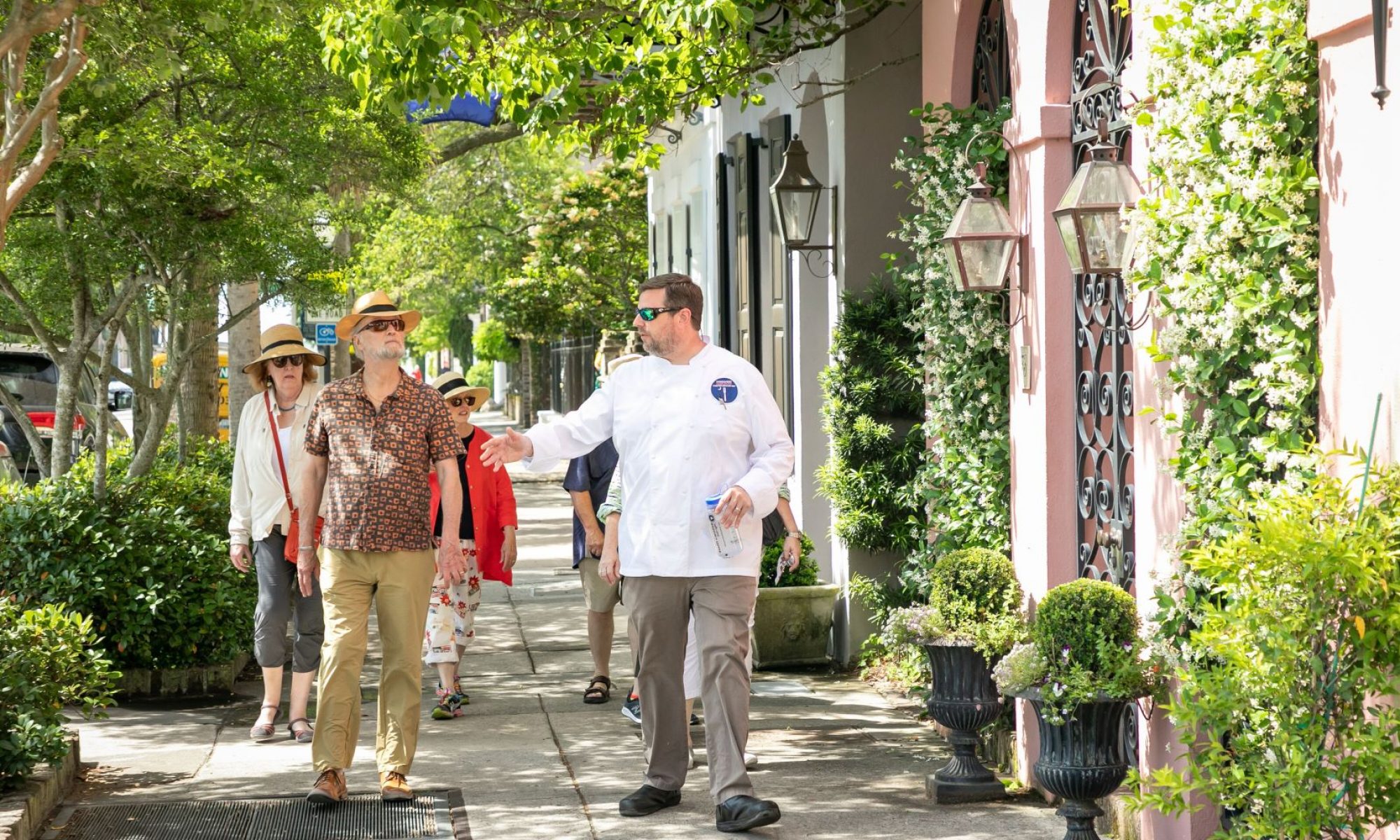At some point, many or most of the visitors to our city find themselves drawn to White Point Gardens. Located at the tip of the Charleston peninsula where High Battery meets South Battery, visitors are afforded a view of the Ashley and Cooper rivers meeting to form the Charleston harbor. From there, it is said, stem the Atlantic and thence all the oceans of the world.
 Known originally as Oyster Point, White Point Gardens began as a simple shoal of oyster shells. It was famously depicted in the 1809 map of the walled city of Charles Towne, based on the 1704 survey by Mr. Edward Crisp, who identified himself in 1715 letter to the Lords Proprietors of Carolina as a London “Merchant trading to Carolina.” Crisp apparently was granted land as remuneration for publishing the map, but never came to the colony itself. By 1700, it came to be known as White Point.
Known originally as Oyster Point, White Point Gardens began as a simple shoal of oyster shells. It was famously depicted in the 1809 map of the walled city of Charles Towne, based on the 1704 survey by Mr. Edward Crisp, who identified himself in 1715 letter to the Lords Proprietors of Carolina as a London “Merchant trading to Carolina.” Crisp apparently was granted land as remuneration for publishing the map, but never came to the colony itself. By 1700, it came to be known as White Point.
In the late 1680’s, a watch house was built here, followed by cannons and entrenchments in the 1700’s. In December of 1718, Stede Bonnet, the so-called “Gentleman Pirate” was tried and hanged in Charles Towne, then buried here with his crew, allegedly below the high tide mark. He’d been caught trying to escape across the harbor dressed as a woman.
Over the course of the 19th Century, a series of forts and batteries lined the tip of the peninsula, to afford enfilading protection to the numerous forts and batteries that lined the harbor. The Battery, get it? Between war and peace, Charlestonians made use of the wide promenades that to this day feature crushed oyster shells as a testament to its’ history.
In the 1851 image below, there are some notable differences from the garden today, notably the addition of the cast-iron bandstand given in 1905 / 1907 in memory of Mr. and Mrs. George W. Williams. Mr. and Mrs. Williams, you see, gave #2 Meeting St. as a wedding gift to the their daughter and son-in-law. A beautiful rendition of the Queen Anne style popular at the time, it features two Tiffany windows.

Today, White Point Garden is the city’s oldest. The park is lined with monuments significant of Charleston’s long and storied history. Most notably is the monument to the Confederate Defenders of Charleston, carved by H.A. MacNeill and cast in Paris in 1932. A bronze figure stands before the Roman goddess Minerva, an allegorical defense of the city. The shield is emblazoned with our motto “Dum Spiro Spero,” or, “While I breathe, I hope.” (Also the name of an album by the kick ass Japanese metal band Dir En Grey.)

Another significant monument in the park is dedicated to the Palmetto Guard, by E.T. Viett. The defeat of the British armada at the outset of the American Revolution is a story close to many hearts in South Carolina. The flag, a crescent moon emblazoned with the word “Liberty,” was designed by Col. William Moultrie in 1775 at the behest of the Revolutionary Council of Safety. It flew over the still unfinished Fort Moultrie (constructed largely of palmetto logs) on Sullivan’s Island. On June 28 of 1776, a British armada that had remained undefeated for 100 years showed up. During the ensuing 16 hour battle that ensued, the flag was shot down. In full view of his aggressors, Sergeant William Jasper saved the flag and unfurled it again, exclaiming “Don’t let us fight without a flag!” That scene is depicted in the bronze monument to the Palmetto Guard. In South Carolina, we remember the contributions of our defenders by celebrating Carolina Day every June 28, at noon of which “Three Blind Mice” is played from the steeples of Saint Michael’s Church, so it is said because the message runner only knew how to play that tune when he came into the city to tell everyone we’d won.
Colonel William Moultrie himself has been memorialized by placement of his huge likeness near the tip of the Battery. Colonel William Moultrie joined White Point Garden in 2007, displacing the previous monument- the capstan of the USS Maine.
The live oaks are grand, and the promenades are still lined with crushed oyster shells.



One Reply to “”